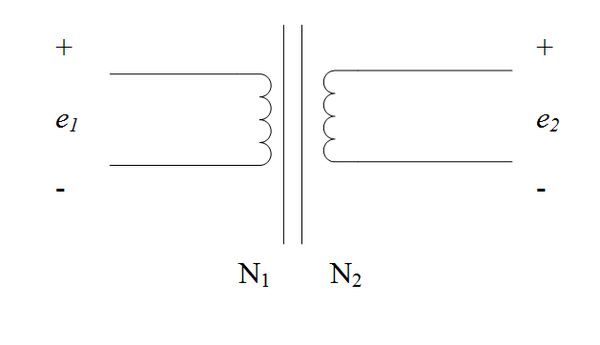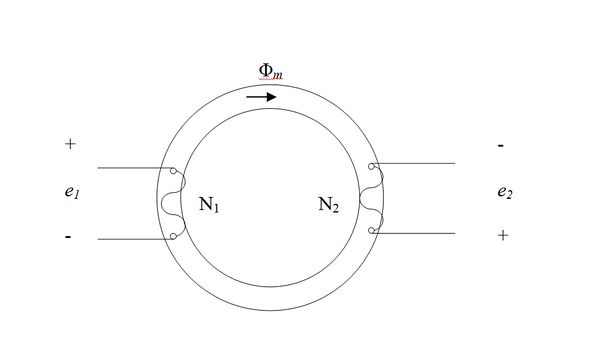Example Problems with Transformers: Difference between revisions
Jump to navigation
Jump to search
No edit summary |
No edit summary |
||
| Line 2: | Line 2: | ||
'''Kevin Starkey, Nick Christman, Aric Vyhmeister''' |
'''Kevin Starkey, Nick Christman, Aric Vyhmeister''' |
||
'''Problem 1.''' An ''ideal'' step down transformer has a winding of <math> N_1 = 10 \text{ turns and } N_2 = 2 </math> turns. If the input voltage is 1200V, what is the resulting output voltage? |
'''Problem 1.''' An ''ideal'' step down transformer has a winding of <math> N_1 = 10 \text{ turns and } N_2 = 2 </math> turns. If the input voltage is 1200V, what is the resulting output voltage? |
||
| Line 8: | Line 9: | ||
<math> e_2 = \frac{2}{10}1200 = 240V </math> |
<math> e_2 = \frac{2}{10}1200 = 240V </math> |
||
<center> |
|||
{| |
|||
|[[Image:IdealTransformer1-nka.jpg|thumb|center|upright=2|Figure 1: Model for an ideal transformer.]] |
|||
|[[Image:IdealTransformer2-nka.jpg|thumb|center|upright=2|Figure 2: Magnetic circuit of an ideal transformer.]] |
|||
|} |
|||
</center> |
|||
Revision as of 08:45, 20 January 2010
Problems 1-3
Kevin Starkey, Nick Christman, Aric Vyhmeister
Problem 1. An ideal step down transformer has a winding of turns. If the input voltage is 1200V, what is the resulting output voltage?
Solution Using the equation we get




